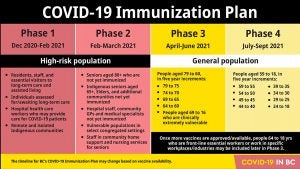Today marks the one-year anniversary of Canada’s first COVID-19 case. This is a difficult milestone for us all, but it is also an important moment to recognize the critical work you continue to provide during an extraordinary crisis.
Thank you for the meaningful work you do every day—especially right now. For all British Columbians, this pandemic has highlighted just how much they depend on the services you provide. Our families, friends, the economy and systems all benefit from your dedication and professionalism. The work you do should never be taken for granted.
All members, working in public schools from early years to Grade 12, are under significant stress as we cope with constantly shifting circumstances for our families and communities during this crisis. For more information on mental health resources please check out Bulletin 44.
There is reason for optimism as vaccine rollout plans have been announced. This doesn’t change the fears and pandemic fatigue you continue to face, so if there is anything we can focus on to support you, please let us know.
To assist you further during this difficult period, we want to provide the most accurate and up to date information relevant to your work in the sector. Please visit our website for information about COVID-19, including frequently asked questions and other resources. If you prefer to receive updates via social media, please follow us on Instagram, Facebook and Twitter @cupek12bc.
We wish you continued safety as we all double up efforts to follow guidelines and stay safe with COVID variants now on the scene.
In solidarity,
Jeanne Marr and Chris Losito
K-12 Coordinators – BC Region
View PDF.



 Troy Tardiff
Troy Tardiff